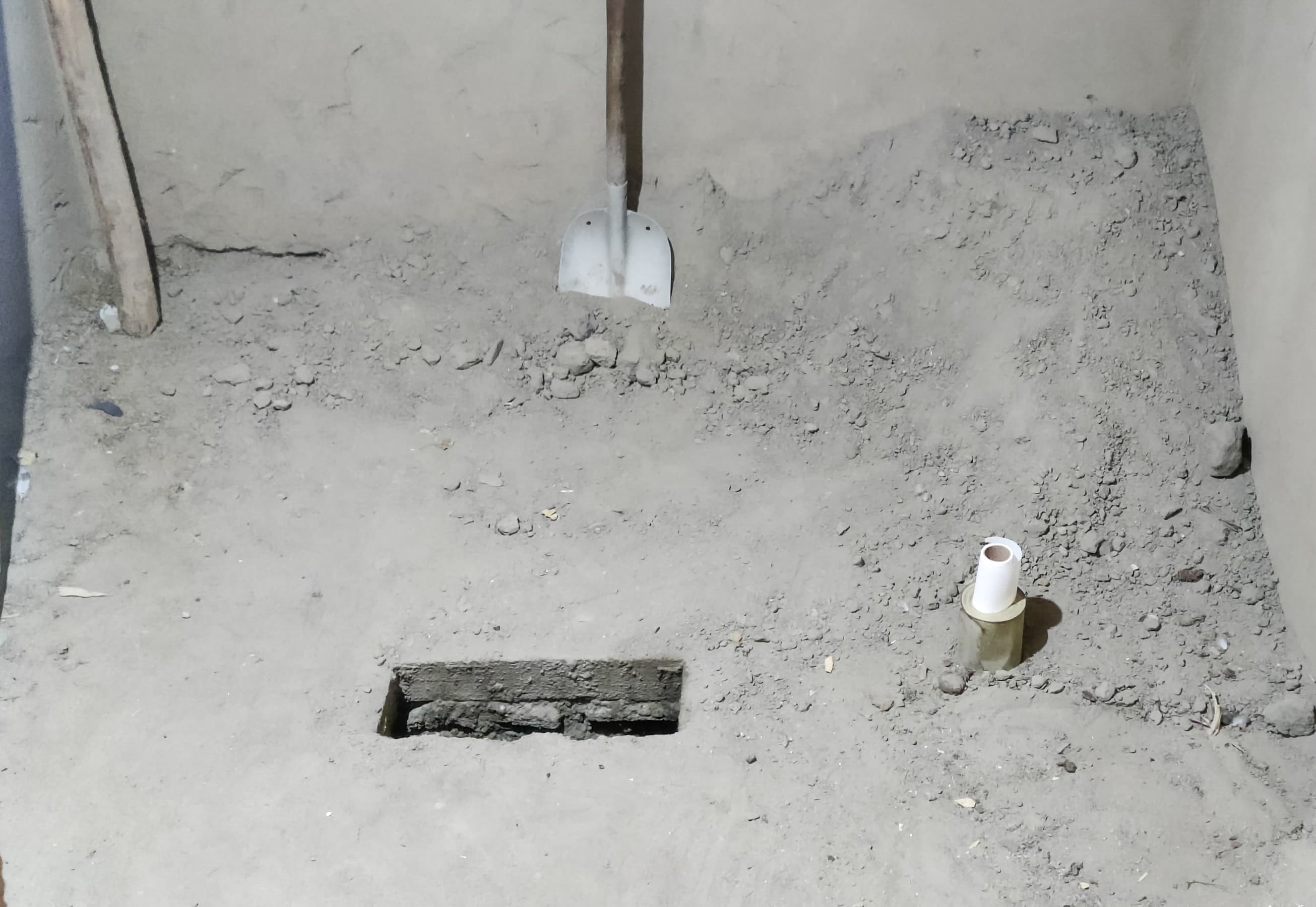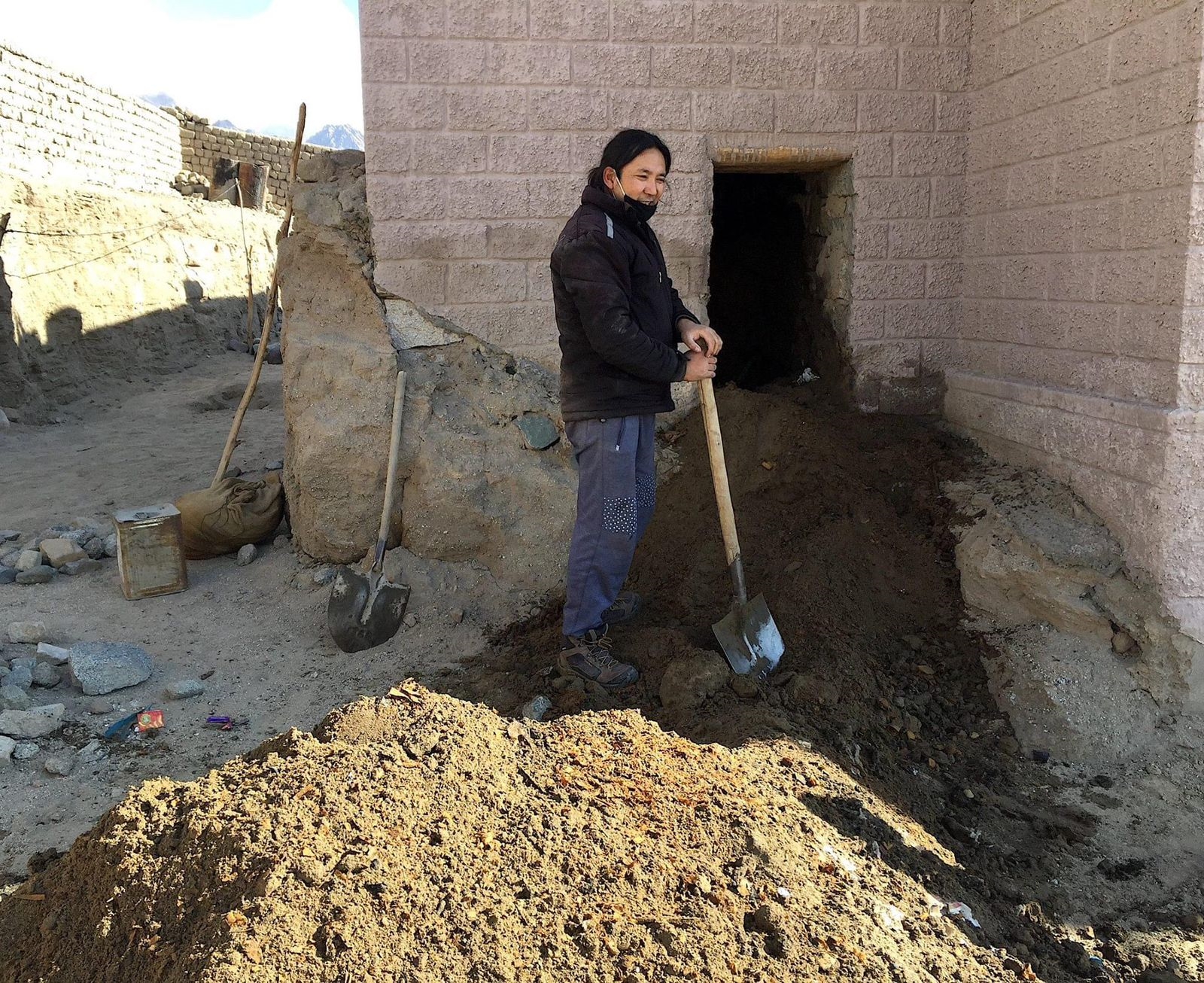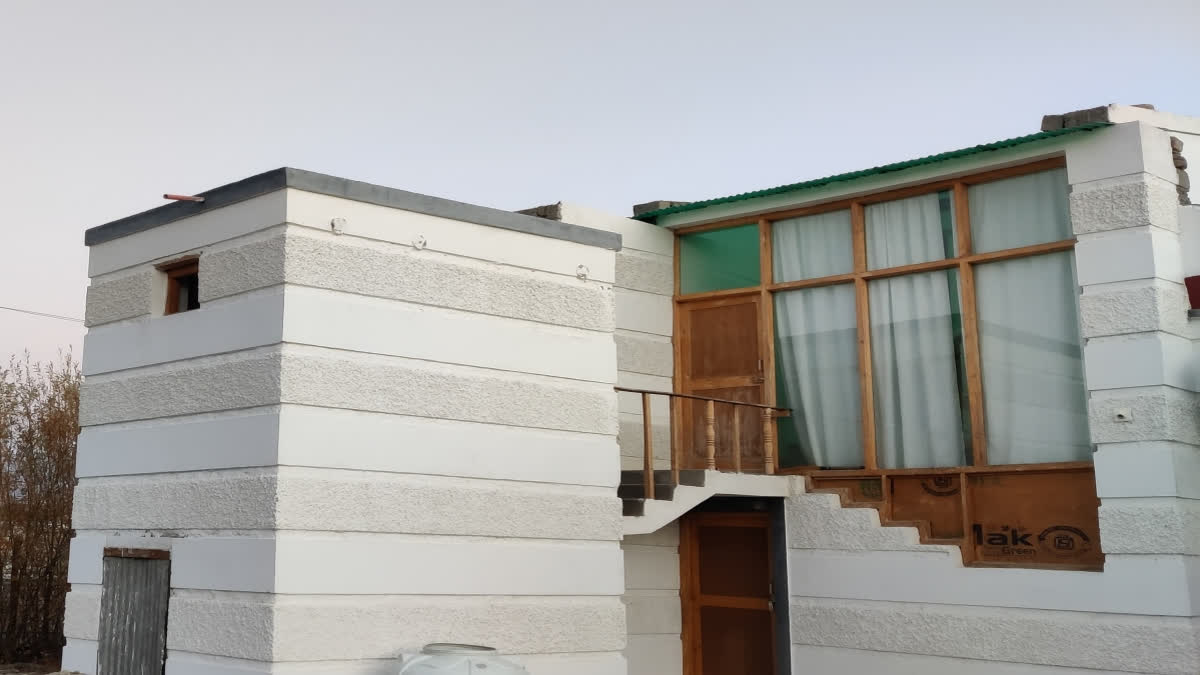Ladakh: Have you ever heard of the Ladakhi dry compost toilet? In a world increasingly focused on eco-friendly solutions and resource conservation, the traditional dry compost toilets of Ladakh have been quietly setting a sustainable example for generations. This unique approach to sanitation reflects a deep understanding of the region's climate, resource availability, and respect for the natural environment — showing how modern environmental challenges can be met by ancient wisdom.
Ladakh, a cold desert, is a region with scarce water resources. Water is precious here, especially during the long winters when temperatures plummet, and streams freeze solid. The local communities have adapted ingeniously, developing dry compost toilets that eliminate the need for water-based sewage systems. Unlike conventional toilets, which require large amounts of water to flush waste, the Ladakhi dry toilets work without any water at all — making them highly practical and environmentally sound.
Stanzin Dorjai Gya, a filmmaker from Ladakh, shares, "In a cold desert like Ladakh, everything we consume can be returned to the earth through traditional dry compost toilets. If we don’t use water judiciously especially in Leh city and other parts of Ladakh, it will create major issues for future generations, especially over the next 50-60 years. With each flush in a water-based toilet, we waste 5-12 litres of water. By contrast, the dry compost toilet uses no water, making it far more suitable for our environment, where temperatures range from over 30 degrees Celsius in summer to minus 30 in winter."

He continues, "In Ladakh’s villages, we still see well-maintained and hygienic dry compost toilets—examples of sustainable living. Like our traditional clothing, we should be proud of our dry compost toilets, showing the world how we’ve thrived this way for centuries. Everything decomposes naturally in these toilets, creating compost that benefits not only insects and microbes but also birds and the ecosystem. Ladakh’s dry compost toilet is an example not only for our region but for the entire planet. They offer a solution to sewage issues and are a sustainable choice for future generations."
Rebecca Norman, who has lived in Ladakh for decades, emphasises, "Ladakh is a desert environment where water is a precious resource. Using it to flush human waste is both wasteful and polluting. In sewer systems, this practice leads to river or ocean pollution, while septic tanks risk contaminating groundwater. Dry toilets, on the other hand, avoid these issues and eliminate the risk of pipes freezing and breaking during Ladakh’s harsh winters."
She adds, "Dry toilets also produce valuable compost for fields, trees, or gardens. Like other animals, humans are part of an ecosystem, and the nutrients we consume should return to that ecosystem. Removing these nutrients forces us to rely on artificial fertilizers to grow the plants we need for food."

According to Norman, there are various designs and strategies for dry composting toilets that consider hygiene, convenience, and accommodation for washing water or paper. Some systems require a cover material, like soil, sawdust, ashes, or dry dung, to be added after each use, ensuring an effective, eco-friendly cycle. Built as simple, elevated structures, traditional Ladakhi dry toilets use a layering system to convert human waste into nutrient-rich compost.
Konchok Norgay, a passive solar and eco-responsive house builder, explains, "The dry compost toilet system has been used here in Ladakh since the time of our ancestors. For a place as environmentally sensitive as Ladakh, this method is ideal—it’s well-suited to the local climate and doesn’t harm the environment. It is important that we continue using dry compost toilets. Nowadays, we’re seeing more flush toilets in Ladakh, but we should be cautious. Although dry toilets can have minor issues, like odour, these can be managed without abandoning the system entirely."
He adds, "Flush toilets have their own drawbacks. They consume large amounts of water, which is especially problematic given Ladakh’s water scarcity. They’re also unsuitable for our environment and can lead to groundwater contamination, flushing away waste that could otherwise be turned into nutrient-rich compost. This compost can be used in farming, especially organic agriculture, making it sustainable and eco-friendly. There's even discussion now about reviving this traditional system. It’s unfortunate that this traditional practice is fading, but it's heartening to see villagers still using it."
In the face of climate change, water shortages have become a critical concern worldwide, especially in arid and semi-arid regions. Ladakh is particularly vulnerable to these changes, as water sources are not only scarce but also threatened by unpredictable weather patterns and glacier retreats. The Ladakhi dry toilet is an effective answer to these pressing issues. It conserves precious water resources, doesn’t rely on extensive plumbing, and reduces pollution by removing the need for chemical-based waste treatment.
The Ladakhi dry toilet shows how traditional practices can offer modern solutions. In cities facing water shortages or communities with limited sewage infrastructure, this model could be adapted to create environmentally friendly toilets that conserve water, prevent contamination, and promote sustainable waste management. As the world searches for ways to combat climate change and preserve resources, these simple, effective toilets remind us that sometimes, the answers are already present in the wisdom of our ancestors.
Eshey Tondup, Executive Director of Ladakh Ecological Development Group (LEDeG) explains, “We have used dry compost toilets in Ladakh since the beginning, following our traditions and customs. These toilets keep the environment clean, and the organic compost they produce can be used as fertilizer in our fields. Today, however, we are seeing an increase in the use of flush toilets in Ladakh, which waste a significant amount of water and harm the environment due to sewage issues. This is why it’s important to continue using our traditional dry compost toilets—they are more sustainable and better suited to our unique environment.”
Ladakh’s dry compost toilet is more than a sanitation solution; it’s a symbol of resilience, environmental respect, and adaptation to nature’s challenges. In a time when we are looking for ways to reduce our environmental impact, the traditional Ladakhi dry toilet is a powerful reminder of how deeply sustainability can be embedded into daily life.
Read More



